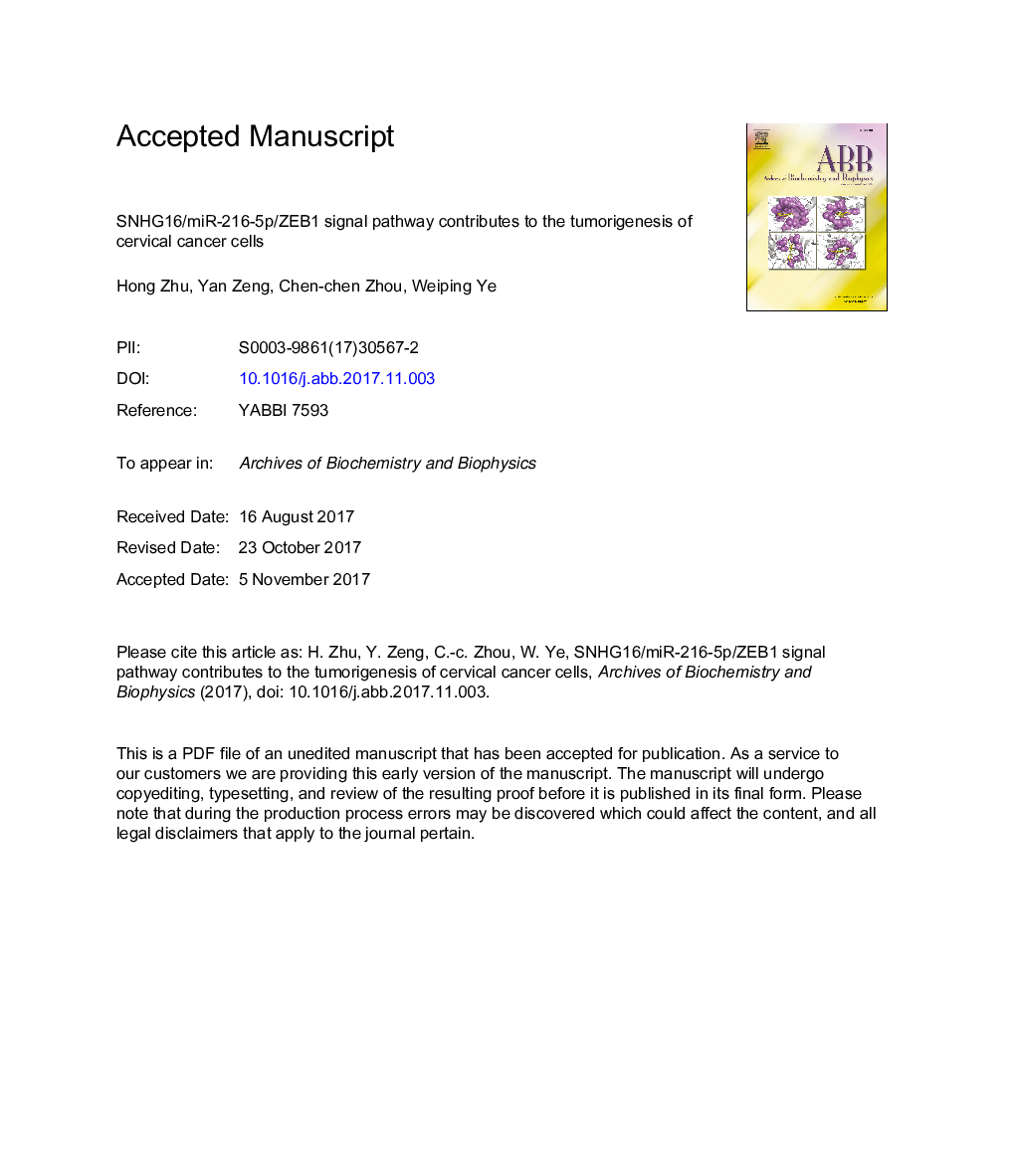| Article ID | Journal | Published Year | Pages | File Type |
|---|---|---|---|---|
| 8288836 | Archives of Biochemistry and Biophysics | 2018 | 33 Pages |
Abstract
Long non-coding RNAs (lncRNAs) have been confirmed as crucial regulators in tumorgenesis. Small nucleolar RNA host gene 16 (SNHG16) has been recently uncovered to be a potential oncogene in several types of cancers. However, its expression level and potential role in cervical cancer remain uncertain. In our research, we assessed the expression level of SNHG16 in clinical cervical cancer tissues and cells. We made use of functional assays to determine the biological effects of SNHG16 on cell proliferation and migration of cervical cancer. By employing the bioinformatics analysis tools, we revealed that miR-216-5p could interact with SNHG16 and there existed a negative correlation between the expression levels of miR-216-5p and SNHG16 in cervical cancer specimens. Furthermore, RIP assay, RNA pulldown system and dual luciferase reporter assays confirmed that SNHG16 directly targeted miR-216-5p by harboring the binding sites of microRNA in the SNHG16 sequence. Additionally, bioinformatics analysis provided an evidence that ZEB1 was a potential target of miR-216-5p. Collectively, it was suggested that SNHG16 could serve as an oncogene that promoted tumor progression by acting as an endogenous 'sponge' to regulate miR-216A-5p/ZEB1.
Related Topics
Life Sciences
Biochemistry, Genetics and Molecular Biology
Biochemistry
Authors
Hong Zhu, Yan Zeng, Chen-chen Zhou, Weiping Ye,
